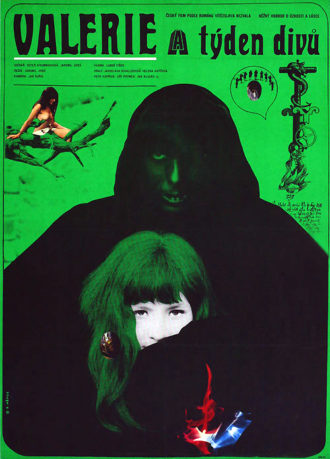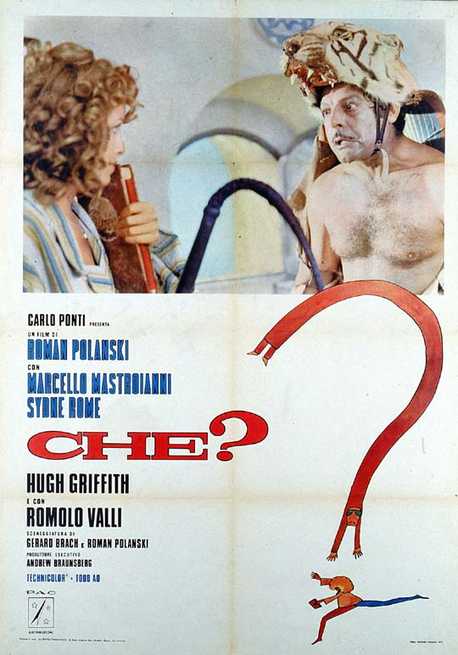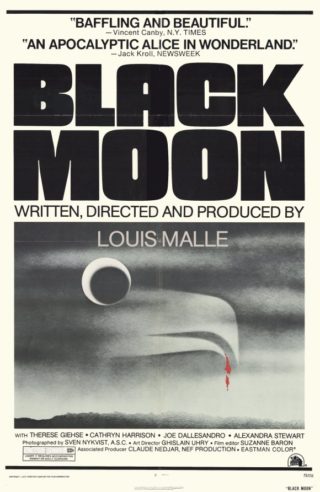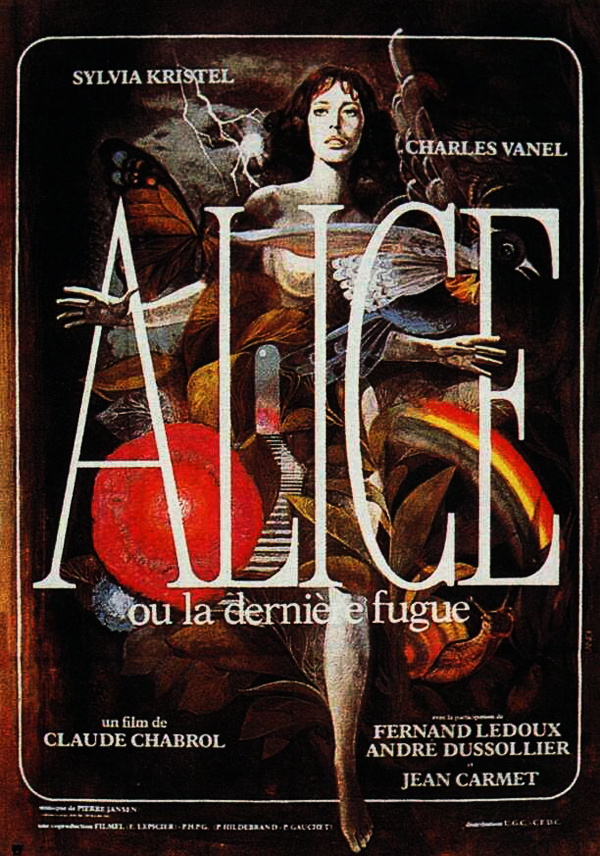There must have been something in the air. How else to explain what happened in Europe during the 1970s, when four world-renowned filmmakers of wildly divergent backgrounds and nationalities inexplicably elected to ditch their usual fare in favor of bizarre ALICE IN WONDERLAND-inspired phantasmagorias?
The seventies were of course a time of great cinematic innovation the world over, occasioned by numerous upheavals in the movie landscape during the previous decade, most notably the collapse of the Hollywood studio system and the rise of the French new wave. Quite a few unprecedented, chance-taking films resulted, including those under discussion here.
What precisely does it mean that four unrelated European productions appeared during the years 1970-76, all bearing wildly similar themes? Truthfully, it probably means nothing, but each film is worth examining, if only because they’re among the strangest products of a decade that produced more than its share of strange films.
Jaromil Jires’ VALERIE AND HER WEEK OF WONDERS, Roman Polanski’s WHAT, Louis Malle’s BLACK MOON and Claude Chabrol’s ALICE OR THE LAST ESCAPADE all have much in common, even though each appears to have been intended as a standalone oddity. All owe a debt to the iconic ALICE IN WONDERLAND, as all feature nubile young ladies trapped in surreal netherworlds. The four films also contain heavily erotic subtexts, and feature hot chick protagonists who look to be in their early twenties (VALERIE, with its fourteen-year-old lead, is the exception). Another linking factor is the fact that each filmmaker was making a radical detour from his standard mantra.
 In the case of the Czech Jaromil Jires that mantra was political satire, particularly in 1969’s THE JOKE, his most famous work, which was banned for years by the Czech government. The following year’s VALERIE AND HER WEEK OF WONDERS (VALERIE A TYDEN DIVU), by contrast, is pure fantasy, though with many startlingly dark and horrific elements.
In the case of the Czech Jaromil Jires that mantra was political satire, particularly in 1969’s THE JOKE, his most famous work, which was banned for years by the Czech government. The following year’s VALERIE AND HER WEEK OF WONDERS (VALERIE A TYDEN DIVU), by contrast, is pure fantasy, though with many startlingly dark and horrific elements.
Visually the film is a stunner, as sheerly beautiful as just about any movie I can think of. It’s also one of the few authentically nightmarish films I’ve seen. That aspect is made explicit throughout, revealed by the young Valerie (played by the radiant Jaroslava Schallerova, the director’s sister) shown asleep in the beginning, climbing into a bed in the end, and remarking more than once that “this is all a dream.”
Valerie lives with her grandmother, a pasty old crow. There’s also a local vampire who likes using Val’s family cellar as a repository for his victims. Around this time Val’s lesbian “cousin,” a bloodsucker herself, moves into the household with her sights on Valerie; the cousin is in fact the grandmother, having been made younger by an affair with the town vamp. But it’s Val’s budding sexuality that provides the film’s real center, and while the erotic content is never salacious, it is quite evident throughout.
The Polish Roman Polanski followed with WHAT (QUE?) two years later, and it is, unfortunately, a big step down.  There are few things in this world deadlier than a Roman Polanski comedy; 1985’s PIRATES proved that point adequately, and this earlier effort reinforces it. Polanski is at his best with oppressive thrillers like REPULSION, ROSEMARY’S BABY and CHINATOWN, and the type of whimsical absurdity characterized by WHAT simply doesn’t suit him.
There are few things in this world deadlier than a Roman Polanski comedy; 1985’s PIRATES proved that point adequately, and this earlier effort reinforces it. Polanski is at his best with oppressive thrillers like REPULSION, ROSEMARY’S BABY and CHINATOWN, and the type of whimsical absurdity characterized by WHAT simply doesn’t suit him.
It’s a sexy, Fellini-esque farce involving a supremely naïve young woman (Sydne Rome) who, fleeing an attempted gang rape, ends up ensconced in a seaside villa somewhere in Italy (where Polanski happened to be staying at the time) stocked by sex-obsessed weirdoes. Everyone, it seems, wants a piece of our personality-free heroine, including a slumming Marcello Mastrionni as a lecherous would-be pimp.
There’s little of interest here, with the sex scenes, the movie’s apparent reason for existence, so tame they might as well not be there at all. At least the eye-catching Rome shows plenty of skin, especially when she gets her trousers stolen halfway through, thus giving Polanski an excuse to have her run around bottomless for the rest of the movie–and outside the pretty scenery, that’s about the only recommendation I can offer.
 The French Louis Malle made BLACK MOON in 1975, and it’s easily the weirdest, darkest, looniest movie ever made by this respected filmmaker, best known for ATLANTIC CITY and MY DINNER WITH ANDRE. The town water filters certainly didn’t filter out the “crazy” when this movie was made! In BLACK MOON Malle created a quasi-fairy tale with counterculture overtones (a pivotal role is played by Andy Warhol vet Joe Dallesandro) set in some unidentified future world. There an alluring gal (British sexpot Cathryn Harrison) traverses a rural landscape where men and women are at literal war, naked children frolic, a unicorn grazes, animals talk and flowers scream when they’re stepped on. Harrison ends up in a chateau inhabited by an old woman and her twentyish children. As in WHAT, everyone in this film wants to ravish the protagonist, but she manages to hold them off…at least until the end, when Harrison does eventually give it up to that pesky unicorn.
The French Louis Malle made BLACK MOON in 1975, and it’s easily the weirdest, darkest, looniest movie ever made by this respected filmmaker, best known for ATLANTIC CITY and MY DINNER WITH ANDRE. The town water filters certainly didn’t filter out the “crazy” when this movie was made! In BLACK MOON Malle created a quasi-fairy tale with counterculture overtones (a pivotal role is played by Andy Warhol vet Joe Dallesandro) set in some unidentified future world. There an alluring gal (British sexpot Cathryn Harrison) traverses a rural landscape where men and women are at literal war, naked children frolic, a unicorn grazes, animals talk and flowers scream when they’re stepped on. Harrison ends up in a chateau inhabited by an old woman and her twentyish children. As in WHAT, everyone in this film wants to ravish the protagonist, but she manages to hold them off…at least until the end, when Harrison does eventually give it up to that pesky unicorn.
Stunningly photographed by the great Sven Nykvist, this heavily experimental film has an appealingly hallucinatory air. I’ll not pretend to understand it, but then I’m unconvinced there’s little worth understanding. As we all know, experiments have an equal chance of success or failure, and BLACK MOON unfortunately falls into the latter category.
Last but definitely least is 1976’s ALICE OR THE LAST ESCAPADE (ALICE OU LA DERNIERE FUGUE) by  France’s Claude Chabrol. The prolific Chabrol is widely known as the “French Hitchcock”, being a longtime master of refined suspensors like LE BOUCHER, LA FEMME INFIDELE, THE CRY OF THE OWL and many others. Dreamlike fantasy is not his forte, which is fully evident in this, one of Chabrol’s most curious and obscure efforts. Here we have Sylvia Krystal—yes, that Sylvia Krystal—as a hot chick who dumps her boyfriend, crashes her car and ends up in a mysterious mansion packed with creepy folks she can’t seem to escape. Once again, everyone in the place is an insatiable horndog, and, again, they all want a piece of our delectable heroine. The whole thing is extremely silly and dialogue heavy, and ends in the most hackneyed, cop-out manner imaginable (hint: the term Dreamlike was not used accidentally!). At least Krystal has some nude scenes, which essentially define her “acting.”
France’s Claude Chabrol. The prolific Chabrol is widely known as the “French Hitchcock”, being a longtime master of refined suspensors like LE BOUCHER, LA FEMME INFIDELE, THE CRY OF THE OWL and many others. Dreamlike fantasy is not his forte, which is fully evident in this, one of Chabrol’s most curious and obscure efforts. Here we have Sylvia Krystal—yes, that Sylvia Krystal—as a hot chick who dumps her boyfriend, crashes her car and ends up in a mysterious mansion packed with creepy folks she can’t seem to escape. Once again, everyone in the place is an insatiable horndog, and, again, they all want a piece of our delectable heroine. The whole thing is extremely silly and dialogue heavy, and ends in the most hackneyed, cop-out manner imaginable (hint: the term Dreamlike was not used accidentally!). At least Krystal has some nude scenes, which essentially define her “acting.”
So there you have it: four European films from the 1970s, one a masterpiece of sorts and the others emphatically not, all wreaking wild twists on Lewis Carroll’s classic. These films also look forward to later, superior Carroll-inspired fare like Jan Svankmajer’s ALICE (1988) and Guillermo Del Toro’s PAN’S LABYRINTH (2006). But for you Euro-philes in search of prime seventies-era weirdness, VALERIE AND HER WEEK OF WONDERS, WHAT, BLACK MOON and ALICE OR THE LAST ESCAPADE should more than satisfy.
